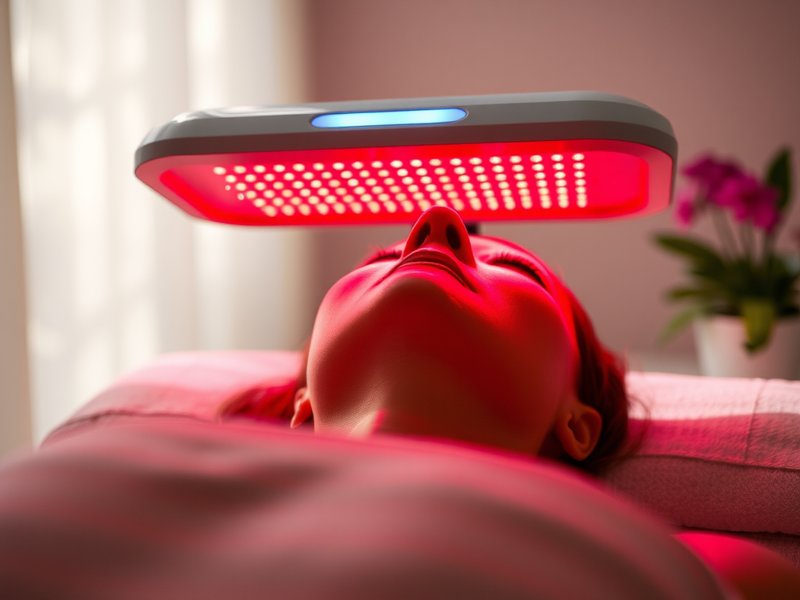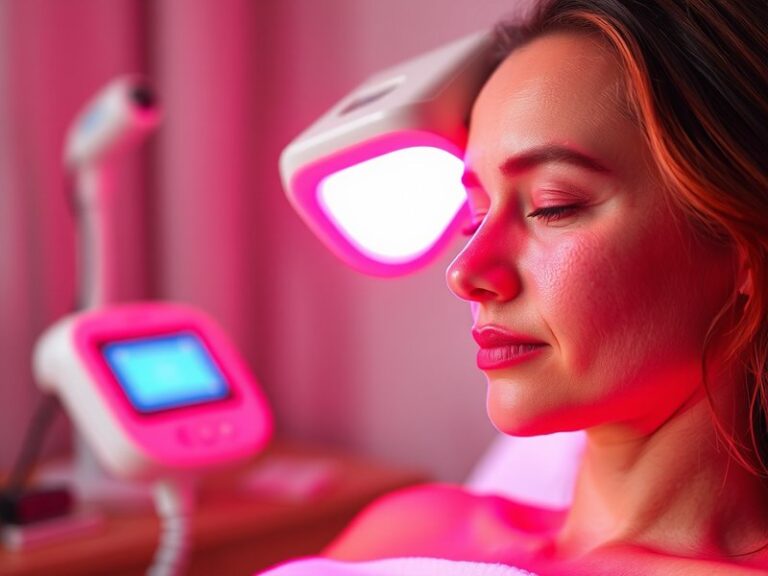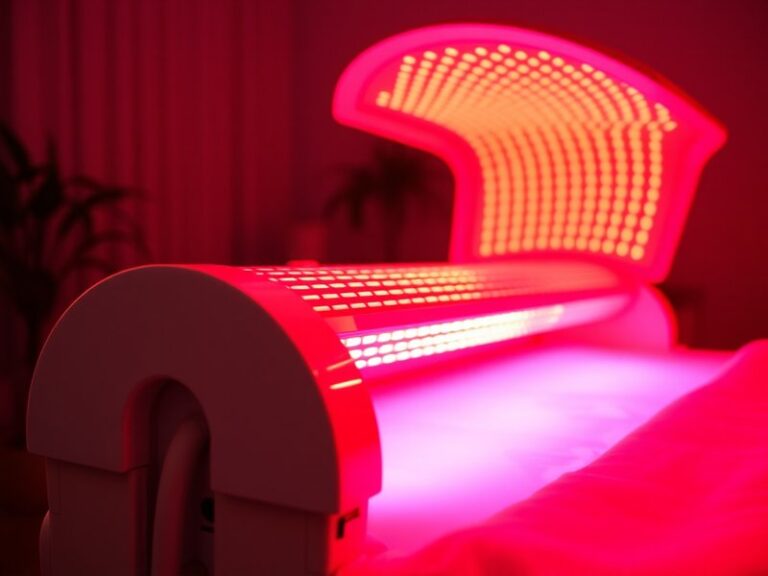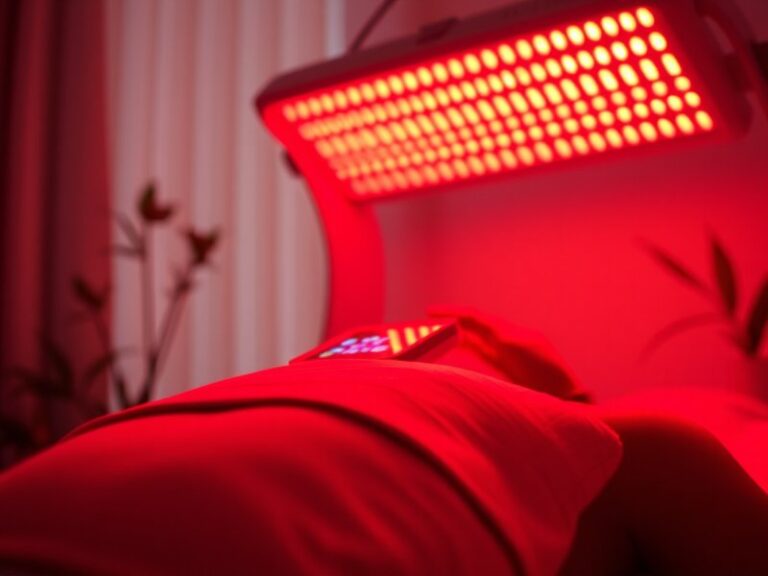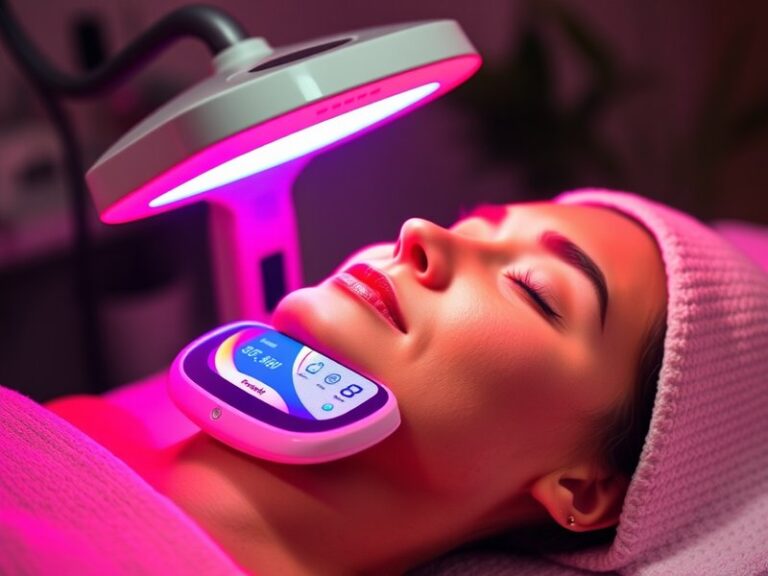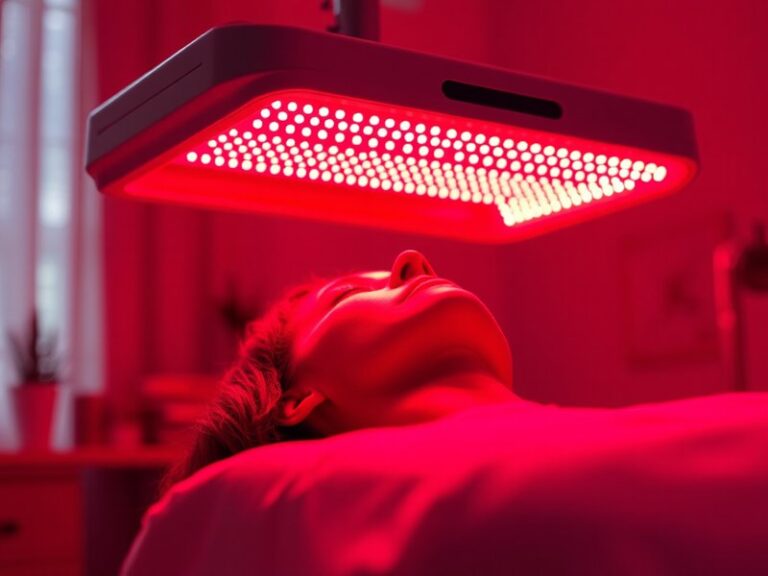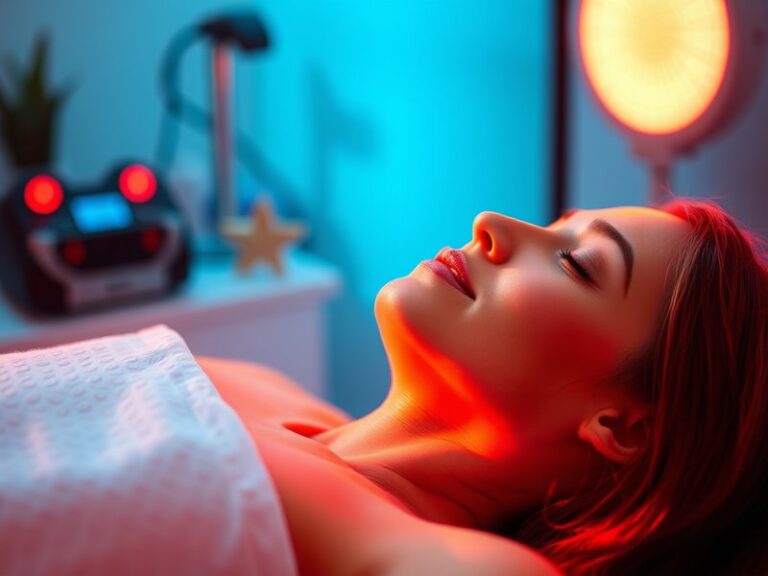How Is Red Light Therapy Beneficial?
How Is Red Light Therapy Beneficial?
Have you ever wondered about the science behind light therapy and its potential benefits?
In this article, we will delve into the world of red light therapy, examining its definition, various benefits, and practical considerations. By the end, you’ll have a better understanding of how this innovative treatment works and whether it might be right for you.
Key Takeaways
- Red light therapy stimulates cellular activity, promoting healing and reducing inflammation.
- It has been shown to be effective for pain relief, skin rejuvenation, and improved sports performance.
- Considerations like treatment duration and skin type are essential for maximizing benefits.
What is Red Light Therapy?
Red light therapy (RLT) is a non-invasive treatment that uses low-level wavelengths of red light to penetrate the skin and stimulate cellular function. Often referred to as photobiomodulation, this therapy has gained popularity in various fields, including dermatology, sports medicine, and general wellness.
RLT works by exposing the body to specific wavelengths of light, typically between 600 to 1,000 nanometers. This spectrum is thought to enhance mitochondrial function, thereby increasing ATP (adenosine triphosphate) production, which is essential for cellular energy.
What are the Benefits of Red Light Therapy?
The advantages of red light therapy are diverse, ranging from physical health improvements to aesthetic enhancements. Here we’ll explore some of the notable benefits:
Pain Relief
Red light therapy has been shown to effectively alleviate pain, particularly in conditions such as arthritis, tendonitis, and chronic joint pain. Research indicates that RLT can reduce inflammation and promote faster healing of injuries, making it a valuable tool for athletes and individuals with chronic pain conditions.
Learn the details in Red Light Therapy Frequency
Skin Rejuvenation
One of the most celebrated aspects of red light therapy is its ability to improve skin health. By stimulating collagen production and increasing blood circulation, RLT can reduce wrinkles, fine lines, and acne scars. Users often report a more youthful appearance and improved skin texture after regular sessions.
Enhanced Muscle Recovery
Athletes frequently utilize red light therapy to expedite muscle recovery post-exercise. By reducing inflammation and promoting blood flow, RLT aids in muscle repair and reduces the probability of injury. Studies have shown that athletes who use RLT may experience less soreness after workouts and improved overall performance.
Improved Mood and Sleep Quality
There is evidence that red light therapy can help improve mood disorders, reduce anxiety levels, and enhance sleep quality. Regular exposure to red light may help regulate circadian rhythms and optimize melatonin production, leading to better sleep patterns.
Wound Healing
RLT has promising applications in wound care as it can accelerate the healing process of cuts, burns, and surgical incisions. Enhanced cellular regeneration leads to faster closure of wounds and a reduction in scarring.
Is it Possible to Utilize Red Light Therapy at Home?
With the advancement of technology, many devices are now available for home use, making red light therapy accessible to a wider audience. However, there are important factors to consider when utilizing RLT at home.
Get the full rundown in Alcohol after red light therapy?
What are the Advantages of Home Treatment?
Using red light therapy at home can offer convenience and flexibility. Individuals can fit sessions into their busy schedules without the need for appointments. Additionally, home devices are often more affordable in the long run compared to professional treatments.
What are the Disadvantages of Home Treatment?
While home devices can be effective, they may not deliver the same power or spectrum of light as professional systems. Users must also ensure they are following guidelines for effective treatment duration and intensity. Misinformation about proper usage can lead to suboptimal results.
What are the Things to Consider Before Using Red Light Therapy at Home?
Before starting red light therapy at home, it is crucial to consider various factors to maximize the therapy’s effectiveness.
Skin Type and Sensitivity
Understanding your skin type is essential because individuals with different skin conditions may respond differently to RLT. People with sensitive skin should start with shorter sessions to gauge their tolerance.
Consistency of Use
To experience optimal benefits from red light therapy, consistency is key. Establishing a regular schedule, rather than sporadic use, will yield better results. Monthly or weekly plans are often recommended for sustained effects.
Device Quality
When selecting a home red light therapy device, it’s vital to research and invest in a reputable product. Key considerations should include light wavelength, power output, and user reviews.
Consulting with a Professional
Consider consulting with a healthcare provider before beginning red light therapy, especially if you have underlying health conditions or are currently undergoing treatment for other medical issues.
What are the Alternatives to Red Light Therapy?
For those interested in alternative options for achieving similar benefits, several therapies exist.
Cold Laser Therapy
Also known as low-level laser therapy (LLLT), this technique utilizes specific wavelengths of laser light to promote healing and reduce pain, similar to red light therapy but can penetrate deeper tissue.
Ultrasound Therapy
Ultrasound therapy uses sound waves to promote soft tissue healing, reduce pain, and improve circulation. This technique is often used in physical therapy settings for recovery.
Microcurrents
Microcurrent therapy involves applying tiny electrical currents to the skin to enhance cellular function and improve skin texture, similar to red light therapy in its rejuvenating effects.
LED Light Therapy
This alternative uses different wavelengths of light and can address various skin concerns, including acne and pigmentation, similar to how red light therapy tackles skin-related issues.
Conclusion: Is it Recommended to Try Red Light Therapy?
Red light therapy presents a myriad of benefits ranging from pain relief to enhanced skin rejuvenation. For individuals seeking non-invasive treatment options, RLT may be a valuable addition to their health and wellness routine. However, it’s essential to consider personal health conditions, device quality, and treatment consistency to achieve optimal results.
Frequently Asked Questions
What kind of conditions can red light therapy treat?
Red light therapy has been shown to help with pain management, skin rejuvenation, wound healing, and muscle recovery, and it may also alleviate symptoms of mood disorders.
Is red light therapy safe?
Generally, red light therapy is considered safe. However, individuals should follow guidelines on usage and consult a medical professional if unsure about its application based on their health status.
How often should I use red light therapy?
The frequency of treatments often depends on specific goals and the device used. For general wellness and rejuvenation, sessions 3-5 times per week for around 10-20 minutes are commonly recommended.
Can anyone use red light therapy?
Most individuals can safely use red light therapy. However, those with certain medical conditions, such as photosensitivity or active cancer, should consult a healthcare provider before proceeding.
How quickly can I expect results from red light therapy?
Results vary by individual and condition, but many users report noticing improvements in their symptoms after a few weeks of regular use. Patience and consistency are crucial for effective outcomes.
